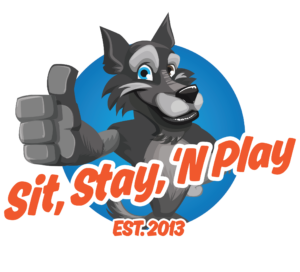In households that have school-aged children, the summers are generally full of fun and exciting activities that include the dog. What happens when the family members head back to school or work in the late summer and the house is now quiet and empty?
When there is a sudden change in a routine, your dog can experience some separation anxiety or depression. The separation anxiety can be trigged when they dog becomes upset because the people they’ve bonded to have left. Some signs that your dog may be suffering from separation anxiety include:
Destructive behavior that was not present before.
Anxious behaviors that may include howling, chewing, pacing, relieving themselves inside, or trying to escape from the yard or house.
There are some things that you can do to help your dog through this tough time of the year.
Work with your children to set and follow a daily routine that works for their lifestyle all year long. The schedule should include feeding, walks to one spot for housebreaking (toileting), walks off the property (for socialization) and appropriate play at approximately the same time every day. Establishing a routine your pet can depend on will help them weather any changes that may occur.
Save a special toy that your pet really loves and have your children give it to them just before they are ready to go out. Put it away again once the children come home so it remains the “special toy”.
Schedule a time with your vet to discuss option. Your dog’s anxiety might have an underlying medical cause or your vet might have some additional ideas to help relieve your dog’s stress.
You can also use an interactive feeder to keep him busy while you are gone. You can use this as one of his meals. Popular interactive feeders include Can Toy and Kong. They can be filled with lots of wonderful morsels and frozen to that the dog will need to work longer to get the reward.
Visit some doggie day cares in the area and work out a schedule to take your dog there a day or two a week.
Be sure to take your dog on a long walk before everyone leaves the house. The physical and mental exercise will do a long way to help relieve stress and tire him out.
o Getting out and walking your lonesome dog is good therapy for both of you. If you face the prospect of a child going off to college or camp or basic training, start preparing your dog sooner rather than later, especially if your child and dog share a particularly close bond. Be sure to get the dog accustomed to walking with other people besides just one person.
When you are home, be sure to include him in activities just as you did in the summer. Let him know that he is still a very important part of your family.
There are also things that you can start to do now, before an issue occurs that will help him adjust to the empty house.
Don’t make a bid deal when you are walking out the door. If you get all emotional about leaving, he will pick up on those emotions and begin to get anxious.
Fake him out! Every once in a while, pretend you are leaving, but don’t. Pick up your keys, grab your lunch, go out the door, and then come right back. There are times where you can do this and only go to the door and not out. Your dog will never know when you’re really leaving and will learn to relax when you are getting ready to leave. Be sure to reward the calm.
If your dog gets too upset in the early stages of learning to calm when you are away, put down one of your T-shirts that you’ve worn in his crate or bed. The familiar scent will help put him at ease.
There are also calming essential oils that you can put on his collar, as well as some sprays that can be used in the room he’ll be staying in.
Leave on some calming/ classical music. We recommend “Through A Dog’s Ear”. “Classical music resulted in dogs spending more of their time resting than any of the other experimental conditions of auditory stimulation. This type of music also resulted in a significantly lower level of barking”
Leave on some calming/ classical music. We recommend “Through A Dog’s Ear”. “Classical music resulted in dogs spending more of their time resting than any of the other experimental conditions of auditory stimulation. This type of music also resulted in a significantly lower level of barking” according to Dr. Wells in a study conducted in Ireland in 2002.
Be sure to ask your children for some wonderful, fun options as well. This will help them be more involved in setting up and following the routine.
For more information on how to train your dog, contact us at Sit, Stay, ’N Play. We are located at 1501 North 5th Street in Stroudsburg. 570.872.9748 or online at www.sitstaynplay.net Did we mention that a trained dog is a happy dog?

